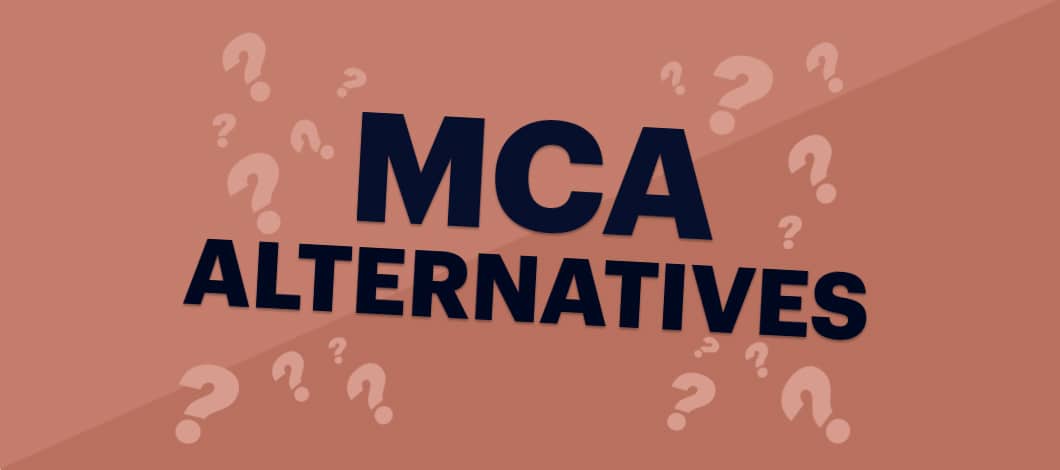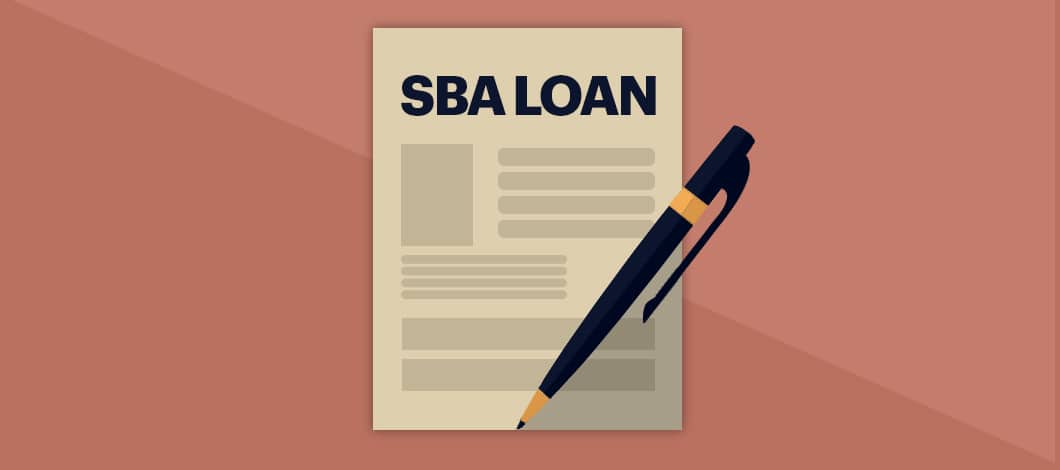Merchant cash advances (MCA) can be useful if you need cash, but they carry high interest. Depending on your financial situation, more viable options might be available. Here are 5 merchant cash advance alternatives to consider when evaluating your options.
1. Business Term Loans
A business term loan allows a borrower to receive a one-time sum of money which must be paid back over a set repayment time frame with interest. Business term loans are classified as short-term, midterm or long-term depending on the length of the term over which they must be repaid.
- A short-term loan may have a term as short as a year to 18 months.
- A midterm loan usually falls into the range of 1 to 5 years.
- Long-term loans have terms longer than 5 years.
Loans with longer terms are usually repaid on a monthly schedule, while loans with very short terms may have weekly or even daily repayment structures.
Business term loans can be classified based on whether they require collateral. Secured loans typically require some type of business collateral such as real estate property or equipment owned by the company. Unsecured loans don’t have this requirement, but instead may require a personal guarantee allowing the lender to seize your personal assets if you don’t repay your loan. Unsecured loans usually have shorter repayment terms and higher interest rates than secured loans.
Business term loans can offer larger amounts of funding than other types of financing. Some loans may come in amounts of up to $1 million or more.
Business term loans amortize, meaning that payments on loan principal are spread out over the term of the loan. Early payments typically go more toward interest, while later payments go increasingly toward principal.
Interest rates on business loans may be fixed or may vary with market conditions.
Pros, Cons and Uses
As a merchant cash advance alternative, term loans have a number of attractions. They offer the advantage of allowing you to spread payments out. These loans have some of the best interest rates among business financing options. They can allow you to borrow large amounts of money.
The biggest disadvantage of term loans is that they may be harder to qualify for, especially for newer businesses. You will probably need a good credit score. Additionally, if you don’t have collateral and have to put up a personal guarantee, this can put your personal finances at risk.
Because business term loans can provide large amounts of money at low interest rates, they are particularly suitable for larger long-term investments, such as building purchases or expansions. They can be used for other purposes, such as refinancing debt or providing working capital.

2. Business Lines of Credit
Another merchant cash advance alternative, business line of credit provides you with an account with a set amount of money you can spend up to your designated limit. You can use your account to make purchases, write checks or transfer money to another account.
With most accounts, when you repay funds, the money becomes available to you to spend again, which is known as a revolving line of credit. However, some business lines of credit are nonrevolving, with funds only available once.
This works similar to a credit card, but business lines of credit have higher limits than credit cards. Whereas credit card accounts typically have limits of up to $50,000, business lines of credit may have limits as high as $250,000.
You are charged interest on what you spend. With some accounts, you may be charged an additional fee per withdrawal of 1% to 2% of money used.
Repayment schedules usually are spaced out over a range of 6 months to 3 years. This is another difference from credit cards, which have no set repayment deadline. Business lines of credit are more like loans in this respect.
As with loans, business lines of credit may be secured or unsecured.
Pros, Cons and Uses
Business lines of credit provide a flexible financing resource with a higher limit than most business credit cards. You can use the funds for whatever your business needs. You only get charged interest on what you actually spend.
Lines of credit tend to have shorter repayment terms than loans. With some accounts, there may be withdrawal minimums and inactivity fees.
Where term loans are useful for long-term investments, business lines of credit are useful for covering short-term expenses. They can help pay for small projects, cover cash-flow gaps and provide for expenses during emergencies.
3. Equipment Financing
Equipment financing is a specialized type of financing used to pay for items such as machinery or vehicles. It includes equipment loans and equipment leases.
The amount of funding you receive from equipment financing is determined by several factors, including your qualifying information and the value of the equipment to be paid for. You may receive up to the full value of the equipment in some cases. When the lender faces a high risk, you may be required to make a down payment. For example, if there is a high probability of depreciation, you may have to make a down payment.
Funds can only be used for equipment, in contrast to other types of financing, such as term loans and lines of credit, which can be spent more flexibly.
Interest rates may range from about 8% to 20%. Repayment schedules may range from 1 year to 5 years.
With equipment financing, the equipment itself serves as collateral. Should you fail to repay what you owe, your lender may seize the equipment.
Pros, Cons and Uses
Because equipment financing relies on equipment as collateral, it can be easy to qualify for and quicker to obtain than other forms of financing. It represents a way to cover equipment costs without disrupting your cash flow. It provides an option for situations where you only want to lease equipment instead of buying it.
The main drawback of equipment financing is it can only be used for equipment. You may have to make a down payment. Should you default, you risk losing the equipment.
4. Invoice Financing
Invoice financing, also known as accounts receivable financing, is a type of financing which lets you obtain funding based on using the value of unpaid invoices from your customers as collateral. Your funds may be extended in the form of a loan or a line of credit.
When financing is extended as a loan, your lender typically provides you with about 80% of the value of your invoices upfront, although some lenders may advance you the entire amount for a higher fee.
When financing is extended as a line of credit, it works like other lines of credit. Your credit limit is set based on the value of your unpaid invoices. You get charged interest based on what you spend. With some arrangements, you pay a fee for each withdrawal.
Pros, Cons and Uses
Because your unpaid invoices serve as collateral, invoice financing can be easy to qualify for. It can provide a source of quick cash if you use a business model which involves delayed invoice payments.
A con of invoice financing is that the amount you can obtain is limited by the amount of your uncollected invoices. Fees may be high with some lenders.
Invoice financing can be useful if you have unpaid invoices and you need short-term cash to cover a cash-flow crunch or other expenses.

5. SBA Loans
Small Business Administration (SBA) loans are loans from participating lenders partially guaranteed by the U.S. government and subject to regulatory caps on interest rates and fees. They are designed to make affordable financing available to small business owners who may not qualify for other forms of funding.
The SBA program encompasses a range of different types of SBA loans, including general loans, small short-term loans, real estate and equipment loans and loans to help businesses recover from disasters. These loans differ in the amount of money available, term lengths, interest rates and other factors. For example, the SBA 7(a) loan program offers loans up to $5 million for terms of 7-25 years at rates of prime plus a maximum of 4.75% in lender interest.
What SBA loans have in common is that they offer favorable terms, rates and fees because of the reduced risk to lenders afforded by government backing. To protect lenders, SBA loan programs require borrowers to meet certain eligibility requirements. This can make the qualifying process relatively lengthy for some SBA programs, although the SBA Express loan program shortens the process.
Pros, Cons and Uses
SBA loans represent some of the most favorable loans available. Provided you can demonstrate an ability to repay your loan, you may be able to qualify even with a lower credit score, although you stand a better chance with a good credit score.
A drawback of SBA loans is their longer approval process compared with other types of financing. Qualifying can be more difficult for newer businesses or borrowers with poor credit history. SBA lending guidelines generally require you to exhaust other financing options first, except for certain specialized loan programs such as disaster loans.
If you can qualify and you can afford to wait for the qualifying process, SBA loans represent an excellent option for projects requiring large amounts of capital and for business owners with good credit.
Merchant Cash Advance Alternatives: Find the Right Option
When deciding whether to apply for a merchant cash advance, consider whether merchant cash advance alternatives may be better suited to your needs.
Business term loans can provide a long-term financing resource for covering the cost of major investments. Business lines of credit can help you finance short-term expenses or manage emergency cash-flow crunches. Equipment financing lets you leverage items such as machinery as collateral. Invoice financing lets you borrow against the strength of your unpaid invoices. SBA loans offer a low-interest option when you can’t qualify for other types of financing.
Which type of financing makes sense for you depends on factors such as your credit rating, your business model and what you need money for. Take a few minutes to fill out our free no-obligation online prequalifying application and we can help you assess which financing options may be available to you.










